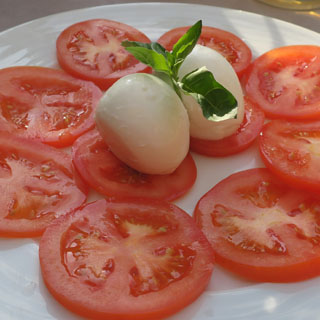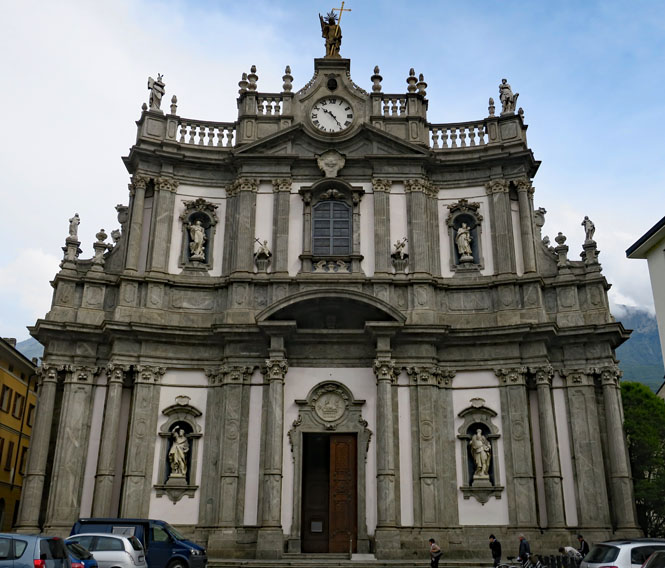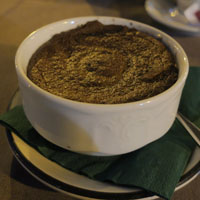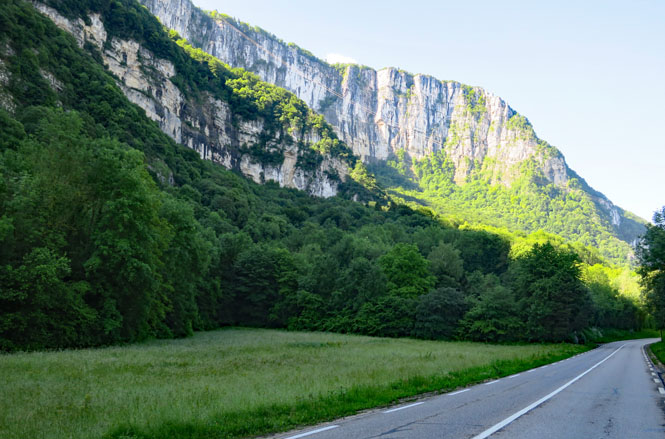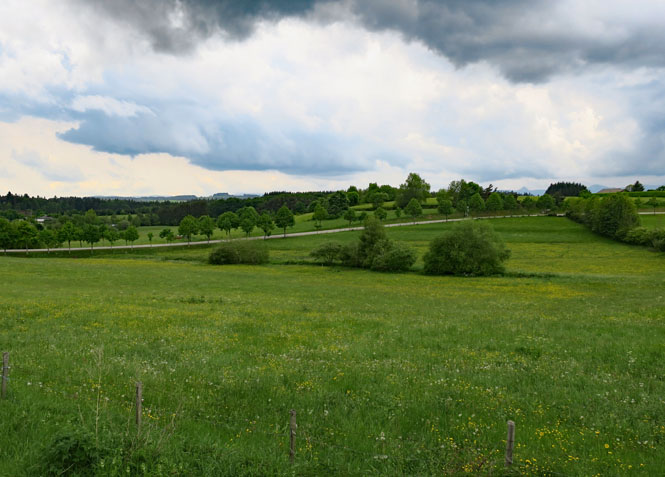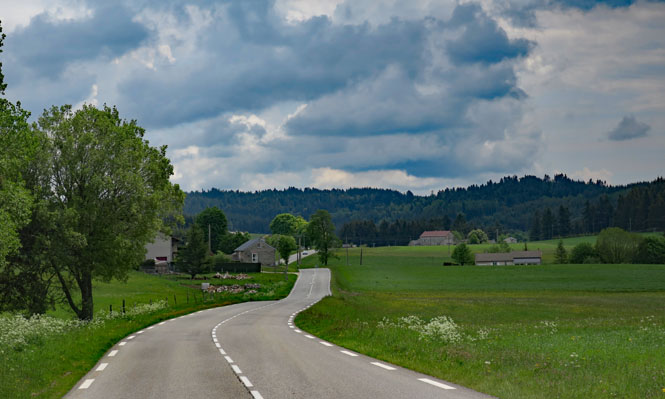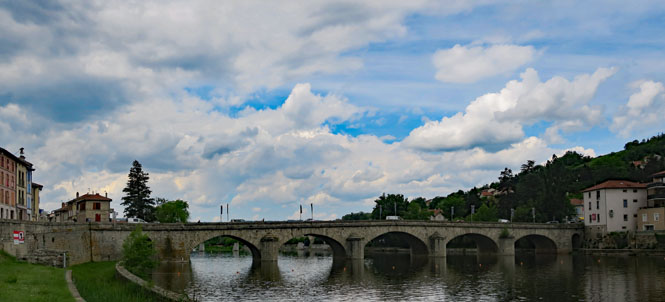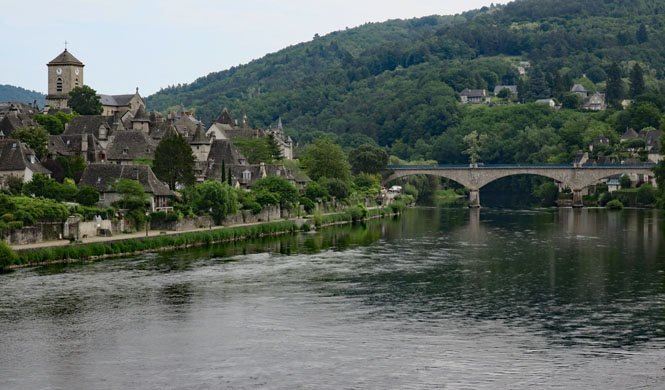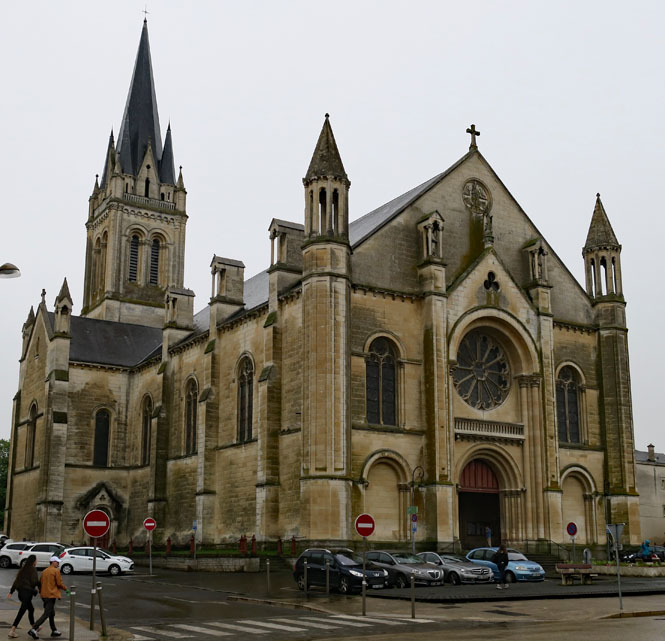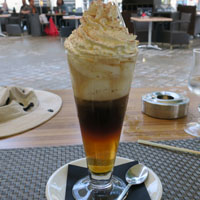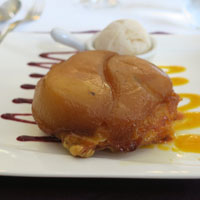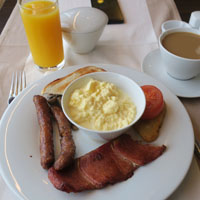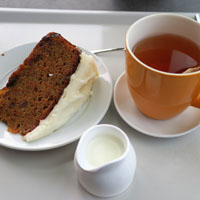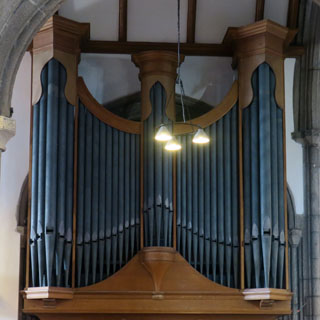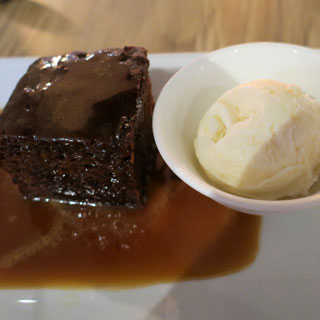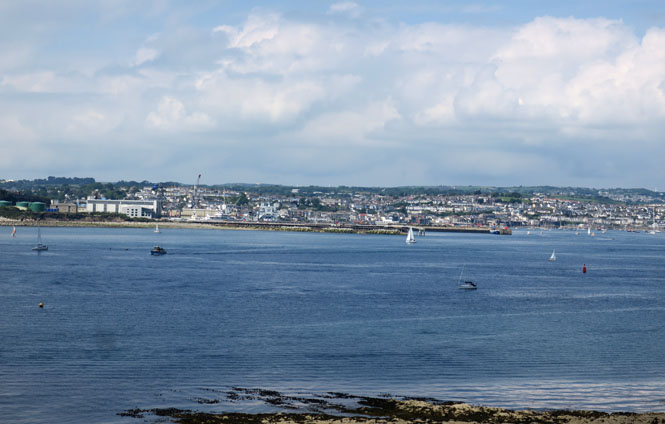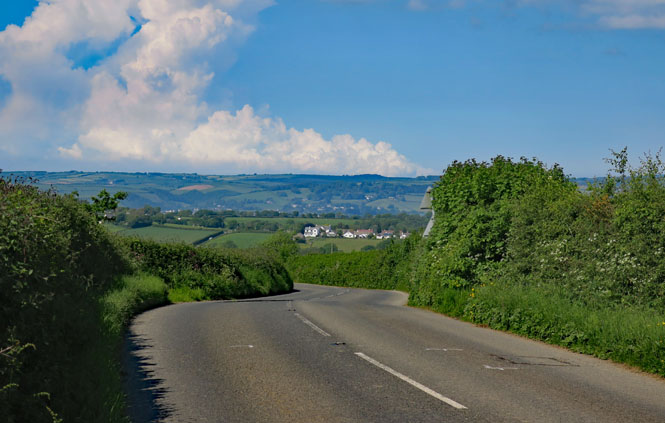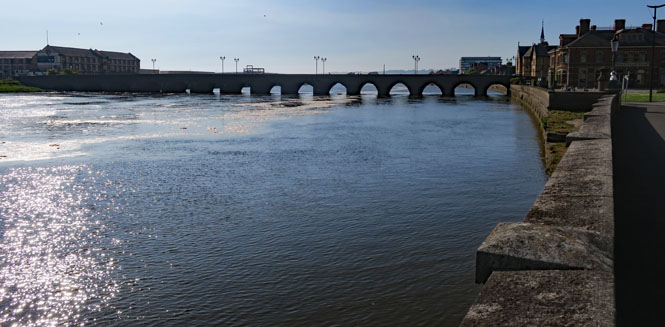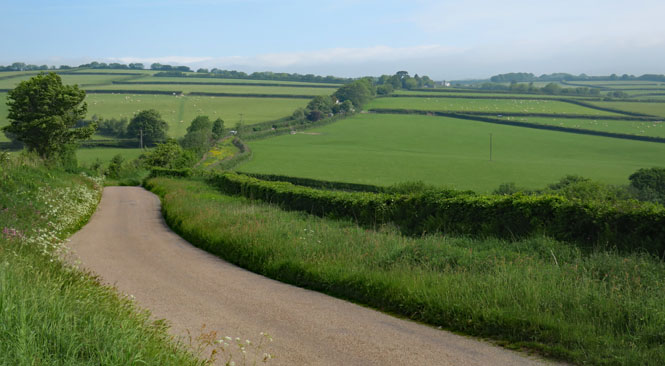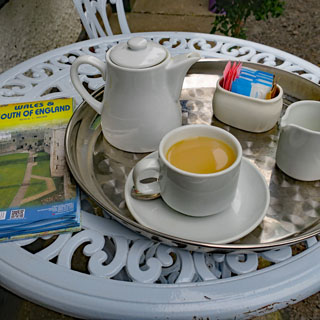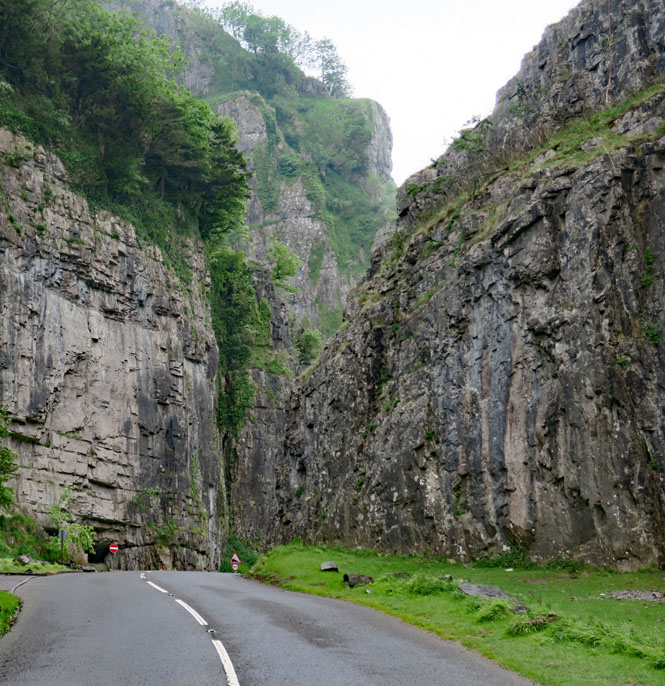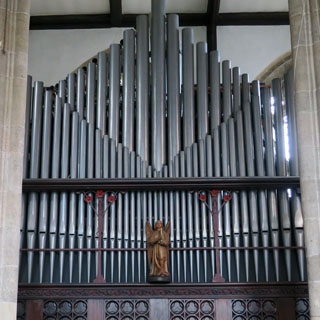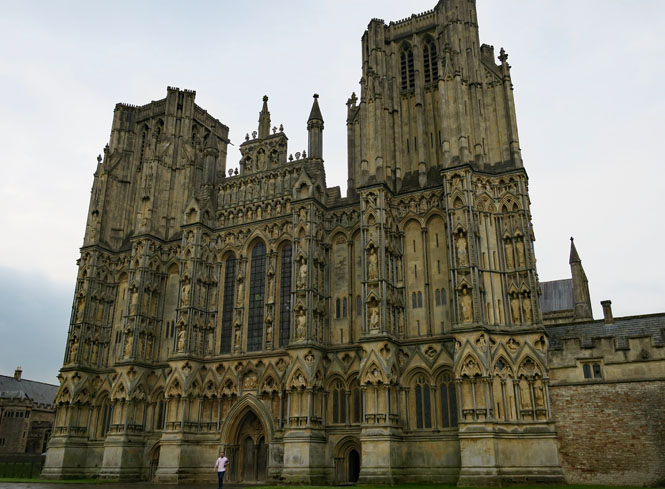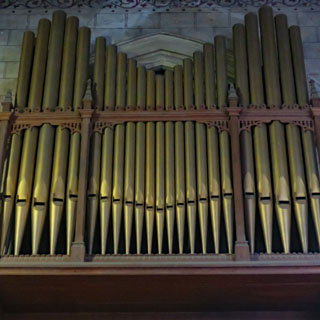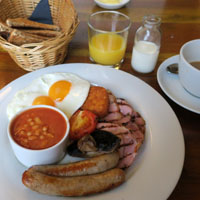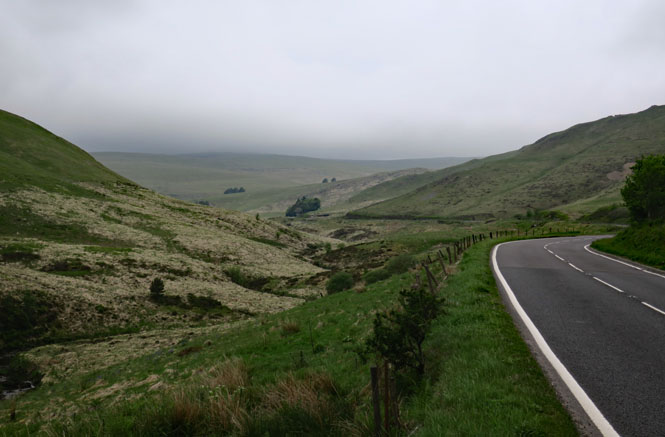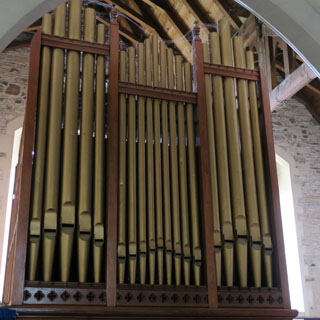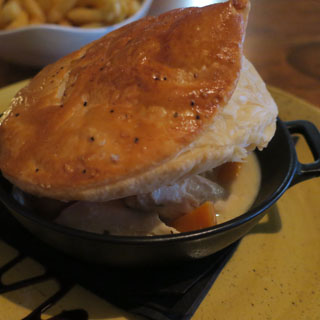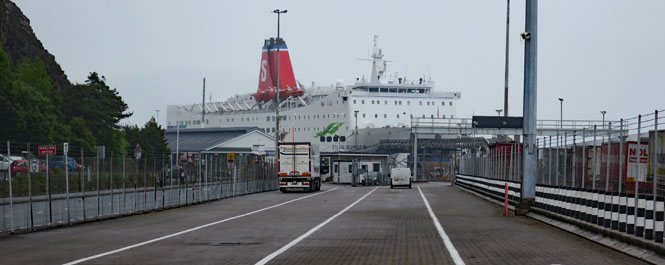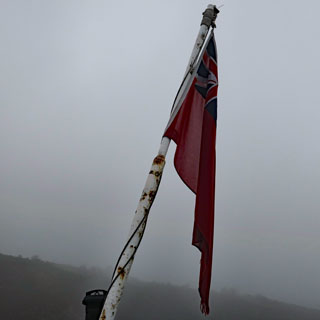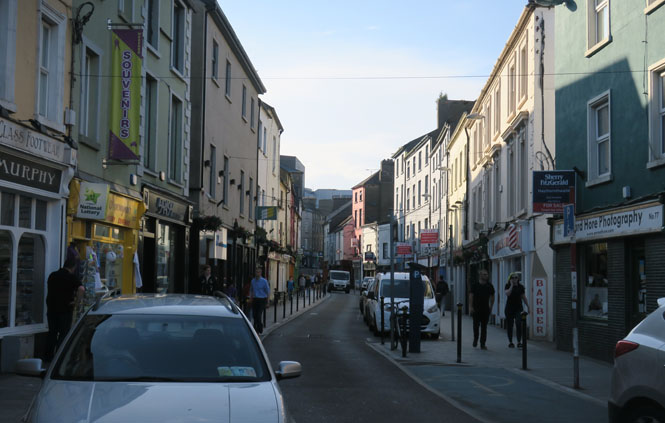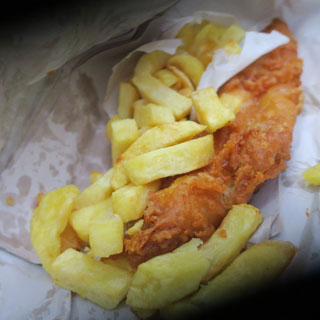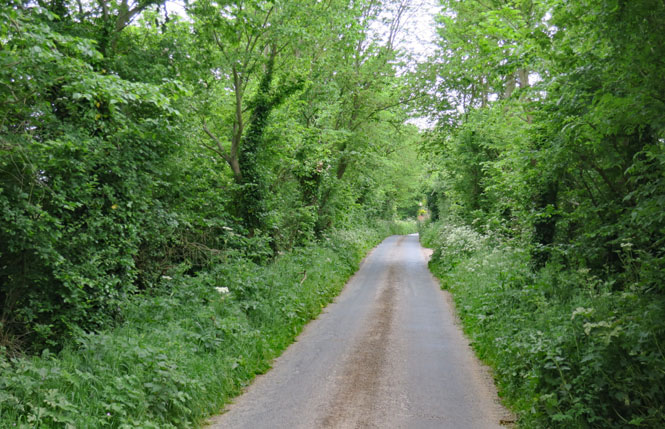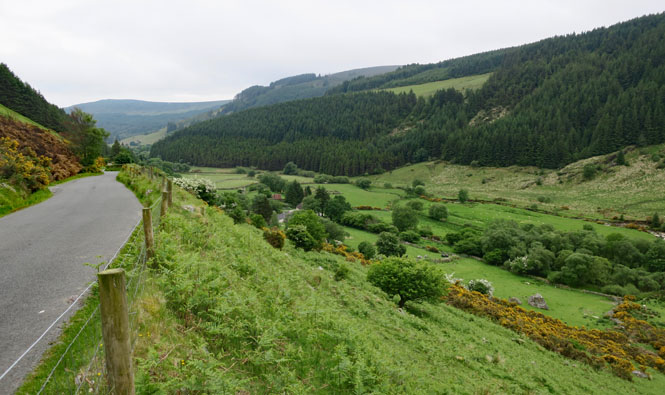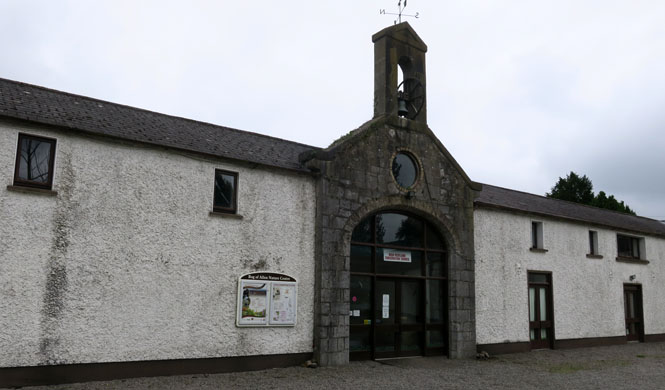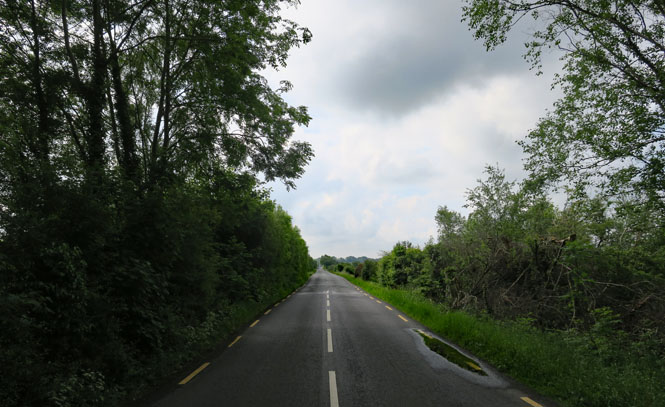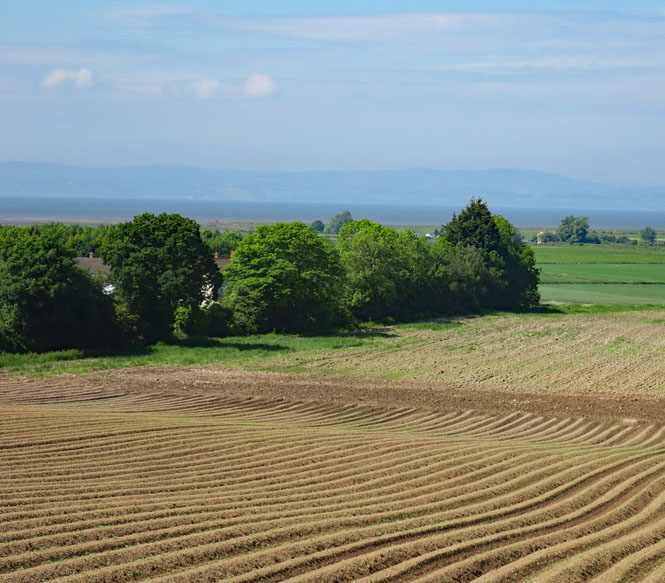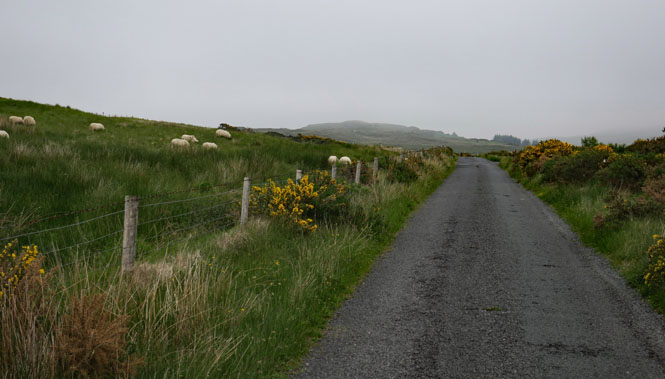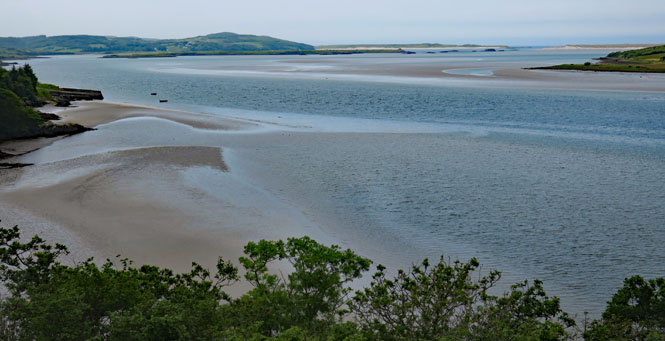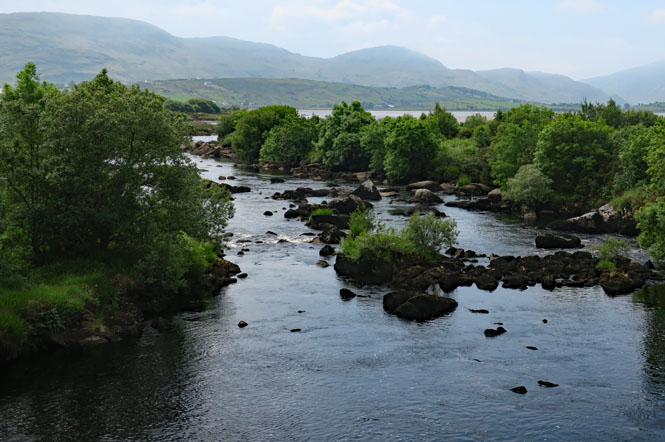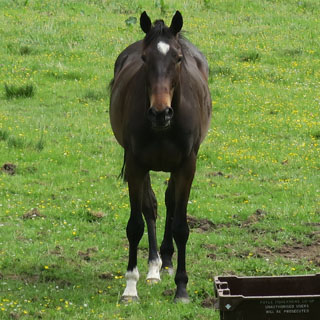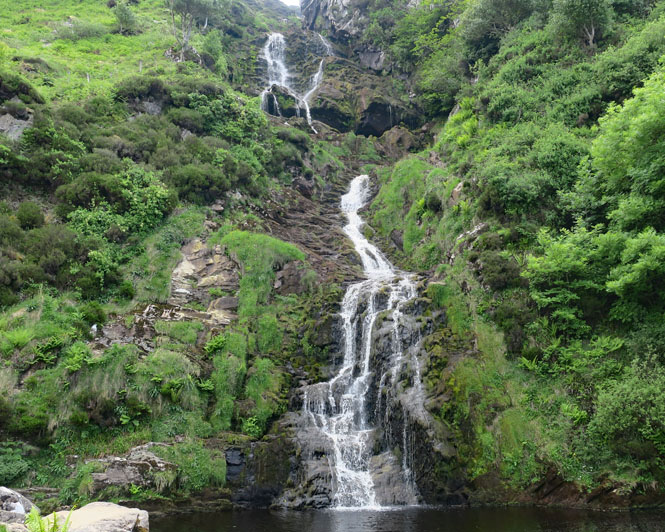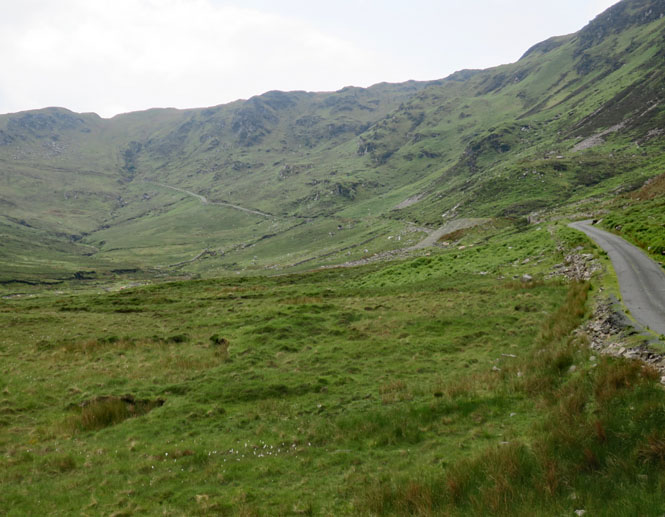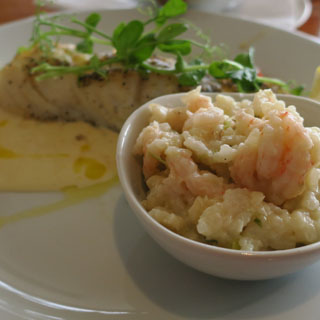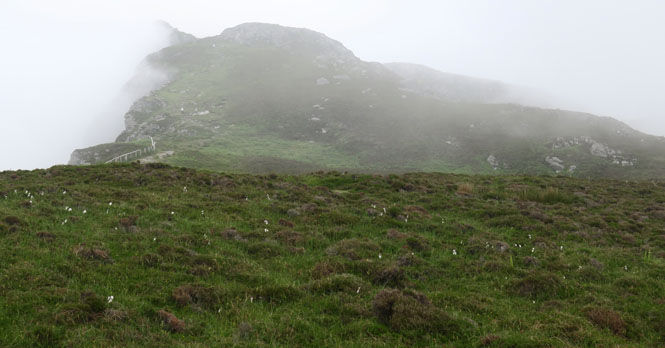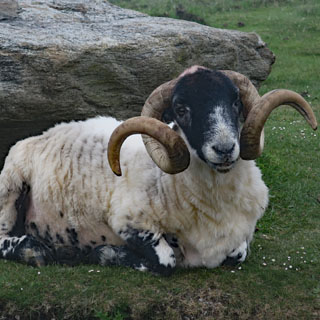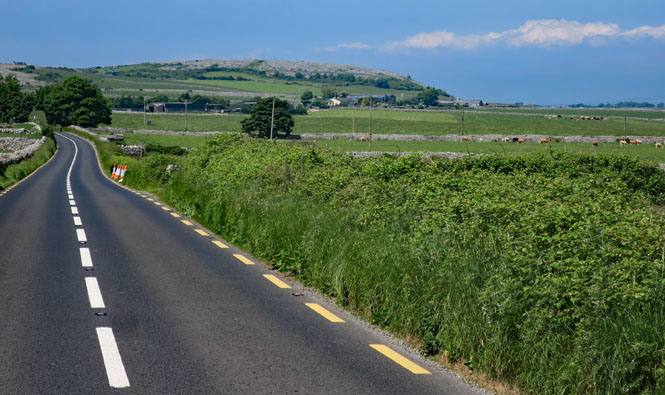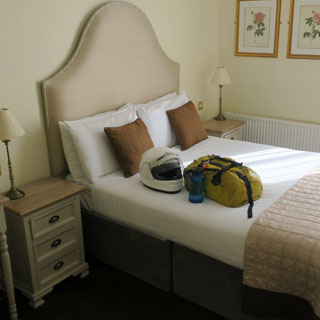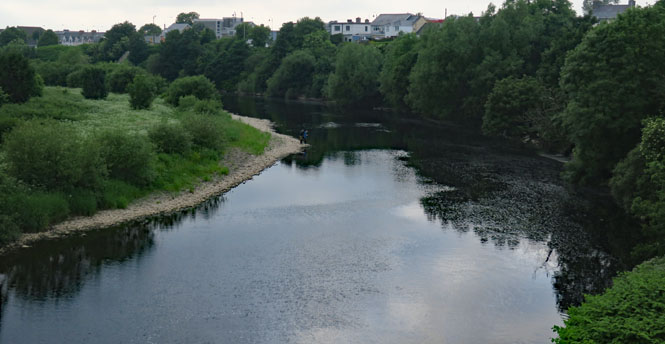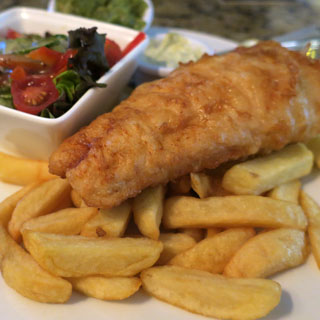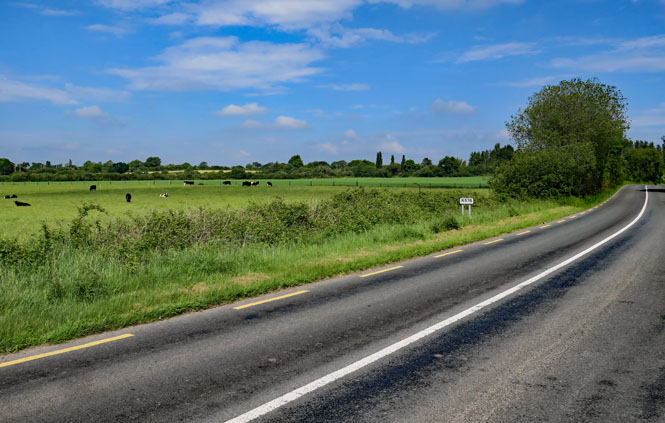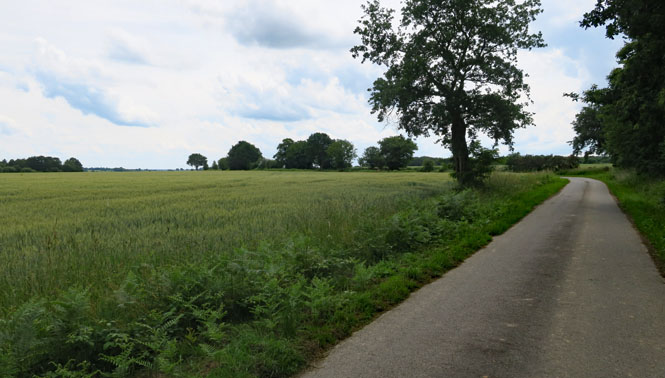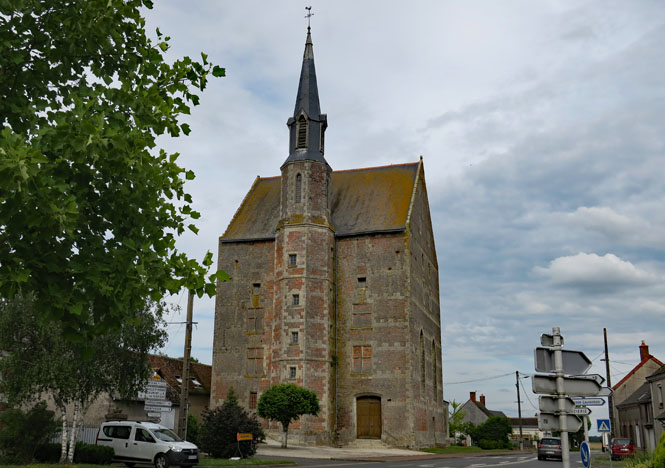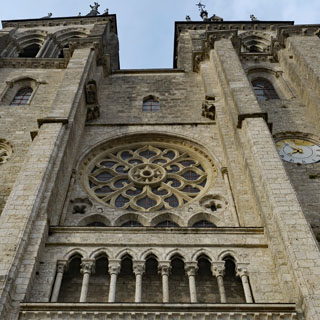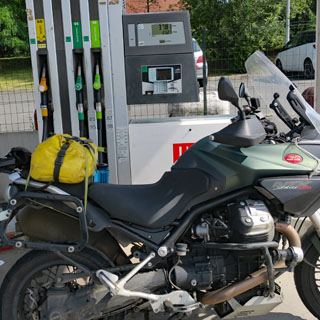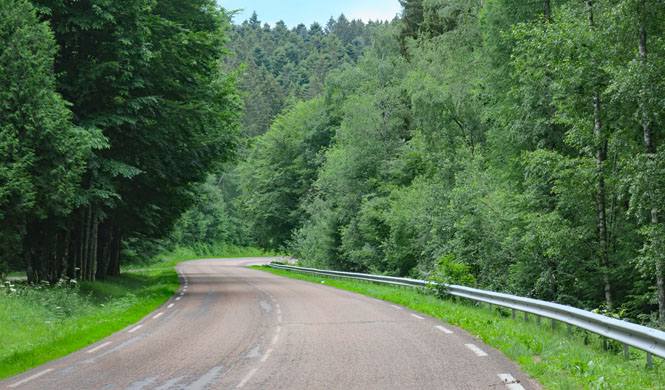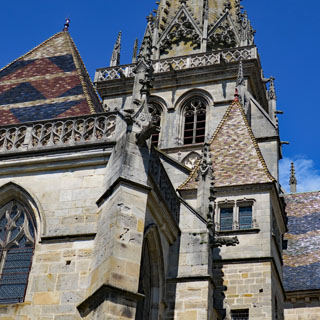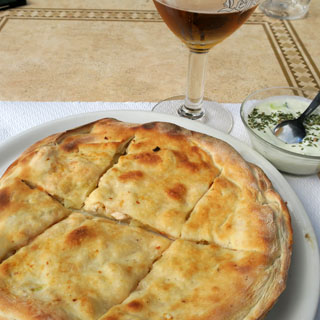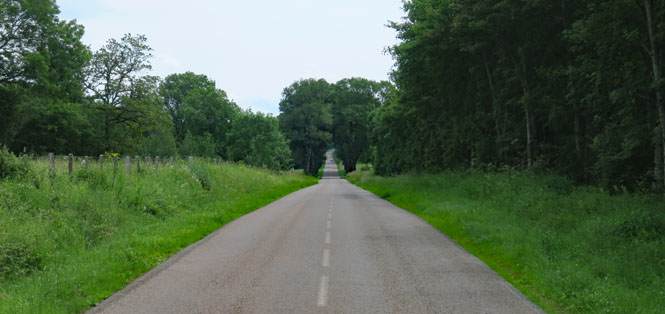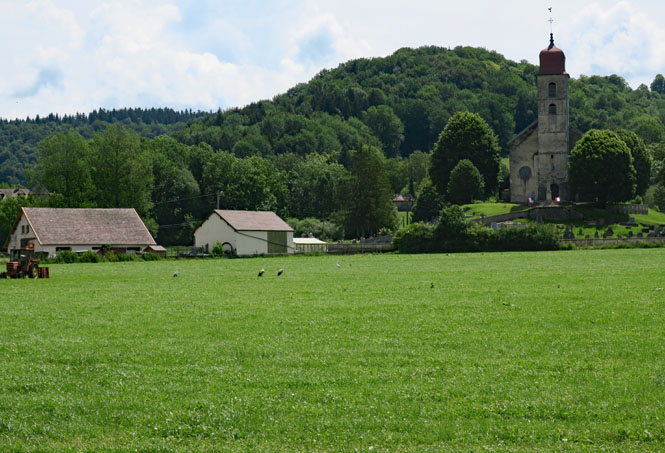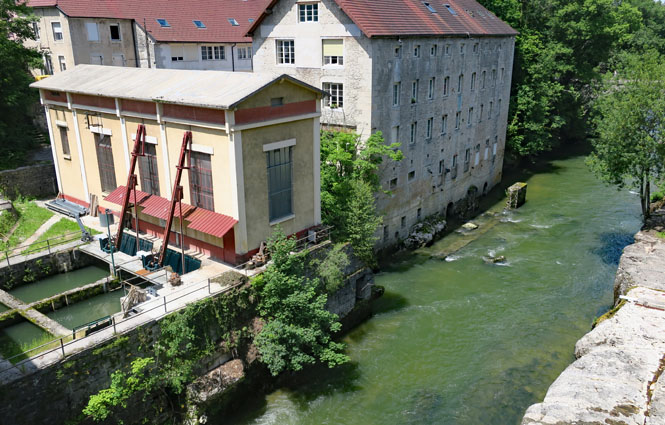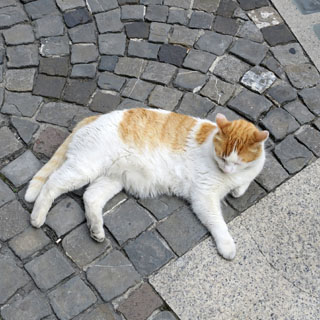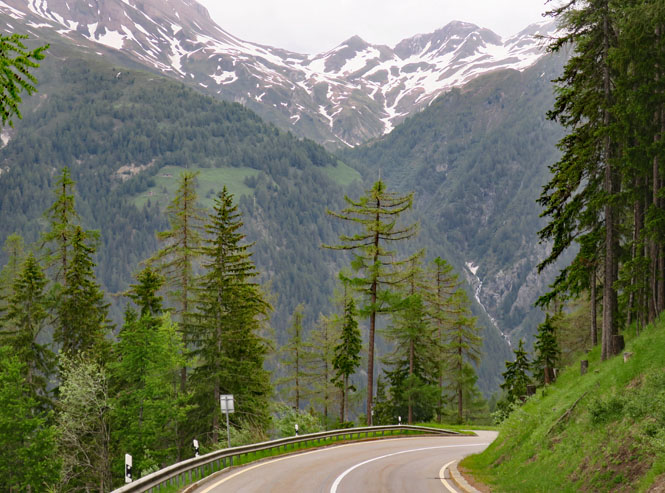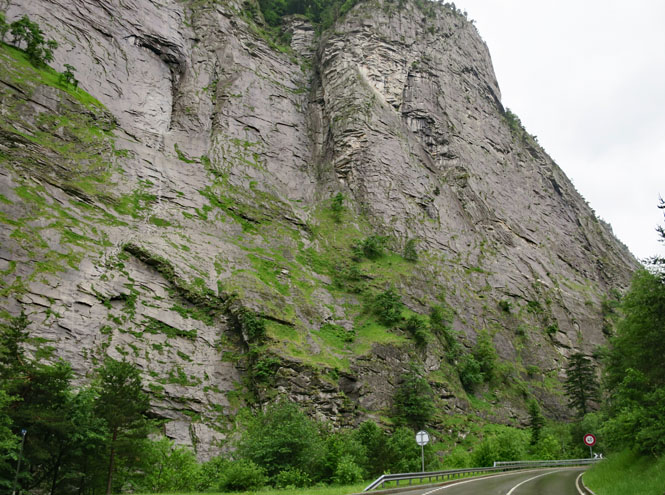




May - June, 2018
Sunday |
Monday |
Tuesday |
Wednesday |
Thursday |
Friday |
Saturday |
| 20 May Wichita Denver Newark |
21 Milano Lecco (Italy) |
22 Lecco (Italy) |
23 Grenoble (France) |
24 Brioude (France) |
25 Niort (France) |
26 Roscoff (France) |
| 27 ferry Plymouth (England) |
28 Barnstaple (England) |
29 Wells (England) |
30 Wooferton (England) |
31 Newport (Wales) |
1 June ferry Wexford (Ireland) |
2 Castlepollard (Ireland) |
| 3 Londonderry (N. Ireland) |
4 Kellybegs (Ireland) |
5 Ballina (Ireland) |
6 Listowel (Ireland) |
7 Rosslare (Ireland) ferry |
8 Blois (France) |
9 Autun (France) |
| 10 Visp (Switzerland) |
11 Mandello (Italy) |
12 Milano (Italy) |
13 Newark Chicago Wichita |
14 | 15 | 16 |

This is a ride from Italy to Brittany, ferry to England and Wales, ferry to Ireland, and then ferry back to France and Italy.
Several years back (in 2013), I did a ride that was something similar, but took a direct ferry from France to Ireland and skipped England and Wales, altogether. That one was done with just eleven days of riding. I'll have more time on this ride; there will be less rushing about.
Yes; this is the same ride that I started last year, but that one was cut short. Not wanting to leave things unfinished, I planned to complete that ride this year.
To the extent that I could, each day's route was often chosen simply to avoid riding on roads that have already been ridden. But, as can be seen (below), I didn't do such a good job in France. Avoiding old roads in Wales is going to be more difficult on future trips.

 Europe Motorcycle Trip #19
Europe Motorcycle Trip #19
I've made this flight several times, but every so often, the route is counter-productive. My first leg from Wichita was first west to Denver before turning back the other way to fly east to Chicago and then Newark. Such is life when your home airport is not a hub.
 New Jersey
New Jersey
Newark, New Jersey. The airport has been undergoing a slow, but steady, rebuilding program, and this time the gate was fairly clear of construction.

 Italy
Italy
Malpensa to Milano. It's a coin toss if I'll make the earlier train to Milano from the airport. If the plane is just a few minutes early, everything falls into place, but, if it's on time, I'll miss the best connections and end up waiting at the Milano train station for a couple of hours. That's what happened this time. Ah well; sometimes sitting on a soft duffle-bag is better than rushing about trying to catch a train. I'm not in Italy to rush about.

Milano to Lecco takes about forty minutes by a pretty quick train; the walk to my hotel (right on the lake) is less than ten minutes.

Lecco from the shoreline. These things are all relative, but Lecco is rarely listed as one of the choice sights of Lake Como or even a recommended place to stay. I suppose by comparison to Como or Bellagio or Varenna, Lecco isn't much. But, it's still a pretty good place to be.
My first meal on arriving in Italy is usually the same thing.

Morbegno. I often pick a spot within easy boat or train distance to visit during my stay in Lecco. I'd been through Morbegno a few times, but never stopped to look about.

What is stylish in a church changes over the centuries. The church of San Giovanni Battista is (now) in the Baroque style and dates from 1680 (completed in 1780).



Dogs meeting and greeting on the street.

For some, life does not need to be energetic.
Torrente Bitto flows into the River Adda...

...and the River Adda flows into Lake Como.

Lecco by night
Risotto with dried perch from the lake--a North Italy classic.
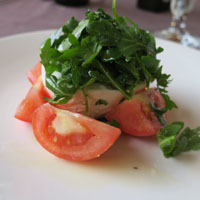

Always, my ride starts at Agostini Moto Guzzi. Without them, I wouldn't be here. I'm packed and ready to go. I'll be rolling out the front door and turning left.
There are a number of options, but I've got to keep Ireland in front of me, so I don't have time to mess about too much in Italy. I'll be taking the long Frejus tunnel to France.

 France
France
I had in mind turning south and riding over a series of high passes once I rode through the tunnel. This is Col du Télégraphe (a frequent stop on the Tour de France) and is just about as far as I got on this road. It's closed. Evidently, I'm still too early in the year for the less frequently used passes. Turn around, and proceed to Grenoble.
Grenoble for the night. I have never had any luck finding a hotel in or near Grenoble. My luck hasn't changed. I'd see hallways and rooms just like this on my channel ferry, but at least those rooms are on a ferry. There's nothing of the sort to recommend this. What surrounds Grenoble is gorgeous.


Riding out of the valley of Grenoble and into the broad, open French countryside.

Saint-Agrève.
I'd have cold days and hot days, wet days and dry days. And, very wet days.
Brives-Charensac on the Loire River. I generally give the bike a quick look during every stop, and noticed that one of the driving lights was hanging by its wires (both attachment bolts being gone). It couldn't have been that way too long without dropping to the road, so I had caught it just in time. I disconnected the wires, made certain that there would be no shorts, and then zip-tied everything back to the mount. This has happened before; I'm not impressed by HELLA lights. I never use the driving lights anyway.
The old bridge, above (mostly gone), and the new bridge, below.
Brioude. I've spent the night in Brioude, before. While I generally prefer to always take a new road and stay at a new town, I was here and figured it was a good place to stop.

Basilica of St. Julien (1060 construction begins).


I am impressed by the frescoes in this basilica. So much color, and so much of it is anything but serious--notice the faux curtains, above.
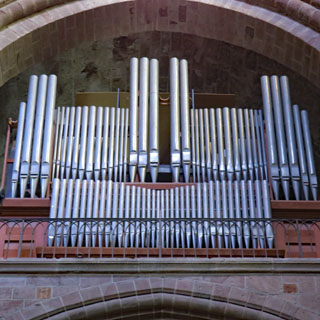

The same leaves on the wall are on the bedspread. This is one of the nicest hotels I've been to (which is a reason I stayed a second time).

Snow? This is an unexpected ski area in western France
Argentat-sur-Dordogne.
Le Viaduc de Rulle. That's not the road I'm on, but it's an impressive bit of civil engineering. There are even longer and higher viaducts in France; the point being that they're common and their highway infrastructure is superb.
Pressac.
Niort. It's not unusual for the hotel desk clerk to ask if I'd prefer to have a secure place to keep my bike for the night. In this case, he only asked me "is your motorbike narrow?" I said "Yes" and was shown the back entrance to where they kept the empty (and not empty) bottles and other things that keep the hotel running smoothly. I always try to find a hotel that's in the center of a city or town, as is this one.

Niort has four significant churches. I was at three of them.

There were a few of these long dragons making their way through the pedestrian zones. I'm not putting my hand in there...


The Donjon de Niort was built by Henry II (Plantagenet) and completed by his son Richard (the Lionheart). The castle was significantly damaged during the French religious wars, but what remains is impressive.

The Sèvre Niortaise River.


The ground floor of every building you see is a restaurant. And, this is only part of what Niort has to offer.
I'm not far from the town of Cognac so, naturally I had a Cognac coffee after my meal. I vote "yes" on Cognac coffee.
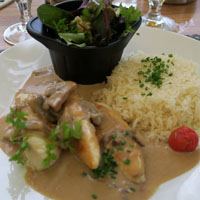
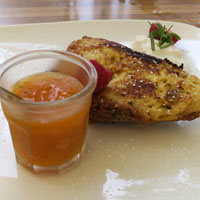
In Kansas they'd be cutting right now, but it's not yet time, here.
Vendée is a region of France along the coast that I had only known for being a stronghold of resistance to the French revolution and supporting the Bourbons to the end (for which they paid a heavy price). But, it was also the home of Eleanor of Acquitaine, which meant it was the site of a great deal of fighting including the religious wars that were to come later. In short, it must be difficult for students to keep track of their own history; it's complicated.
Historial de la Vendée (The Museum of the Vendée).
Artifacts going back to Roman times, and before, have been found.


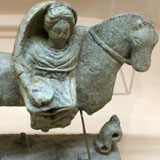


A remarkable tapestry.
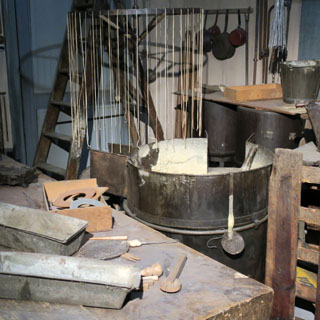
Much of the paintings are focused on the grand, but tragic characters from its past. They've had plenty of noble causes where the hero "died well." They didn't have much chance fighting the revolutionaries who brought down the monarchy, nor Napoleon, who came after those guys. This museum (and this region) isn't dressed in "liberté, égalité, fraternité" that you might see elsewhere across France.


Pornic on the Atlantic.
Notice that white car? That's the road I've just come through, myself. There's not much difference between a back-alley and a busy street.

It's a good place to have a seat outside a crêperie and see what they have that looks interesting. Along with what's obvious, there are banana slices inside, as well.

The Saint-Nazaire Bridge (completed 1975, a world record for cable-stayed bridges at that time).
This was an important submarine base for Germany during World War 2. The pens were built to be unbreachable, and so they were. This pocket of German occupation lasted through the war (the Germans were isolated and there wasn't much point in bombing what couldn't be destroyed), and so the pens are still there.
Today, enormous cruise ships are built here.
Carnac (Karnag). Somebody started planting stones on-end around 6,500 years ago and they kept it up for another thousand years. Why? Well, why not? It's pretty amazing. Row after row--thousands of them.

This part of Brittany is swampy and is full of shallow lakes and shallow inlets from the ocean. As a consequence, any road (or rider) that tries to follow the coast will have a tough time.
Hennebont.
It's foggy and it's raining. I'm now riding with my face shield up and without my glasses as everything mists over immediately. And, it's cold (my electric vest is plugged in). Luckily, my vision is still adequate (at least the DMV thinks so) without glasses.
Roscoff. This was a quiet fishing village until it was decided (in 1968) to expand and deepen the port to allow ferry service between Brittany and England. There's evidently a lot of iodine in the water and this place was once considered a healthy place to be. Perhaps it still is.
Of all the jumping-off points for a ferry to the U.K. or Ireland, this is the best. Why? It's so tidy and compact and there is none of the industrial feel that all the other ports have. This place is easy.

Details of ships have been carved onto the walls of the old church. Ships and fishing have always been important to Brittany.


Onions hanging from a house. Onions have historically been important to Brittany and to Roscoff, but I'm not really sure what the significance of this might be.



Naturally, I'd have onion soup. And fish.
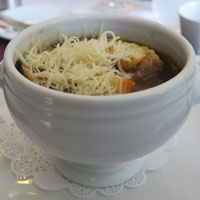

That's a pedestrian bridge out to one of the islands.
Multi-colored rocks on the beach.

Brittany Ferries. Motorcycles load first. On this boat, the crew will strap down your bike.



These wildlife guides are watching for whales and dolphins. They're volunteers who are supported by the ferry company to do surveys of animal activity on their routes.
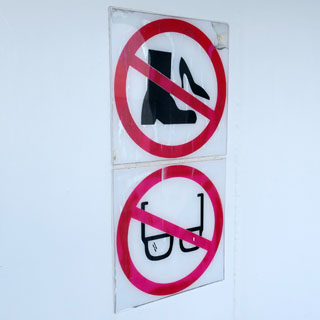

 United
Kingdom
United
Kingdom
Plymouth harbour.
The maneuvering ability of these large ferries is amazing. The harbor isn't all that large, but we spin around and back up to the pier like it's done everyday...

In April of 1944 the allies ran a training exercise in preparation for the D-day invasion of Normandy. The beach of Slapton Sands would serve as the stand-in for Normandy. Naturally, secrecy was as high for this exercise as it would be for the actual invasion.
It all went terribly wrong.
There were serious errors in how the exercise was prepared and how it was carried out. Nine fast German E-boats came across the invasion force and made their attack. Two ships were sunk, two others were damaged. Nearly 750 men were killed.
Because of the secrecy and because of the D-day invasion that was coming, no news was released of this tragedy off the English coast near Plymouth. It remained largely unknown for decades.
In 1984 a Sherman Tank that had been part of the cargo of one of the sunken ships was raised from the ocean floor and made part of a memorial to the Exercise Tiger dead. It was the local community that organized the work and took the leadership to create the memorial. Thank you.
My goal was to ride to the memorial on the west end of the beach and walk the beach of Slapton Sands.
One of the narrow roads to Slapton Sands (my first day's riding of staying left).
I figured that aiming for the village of Slapton Sands would be as good a way to the beach as any. That wasn't the case. It turns out a German campervan had managed to get stuck and could neither move forward nor backwards. Perhaps they're still there...
I turned around and made my way to the east end of the beach, only to find that the road along the beach was closed due to the ocean claiming the road for itself. I wouldn't be going to the memorial after all.

But, I was able to walk on the beach. The idea was for the landing craft to hit this beach just as they eventually would be doing at Normandy. "Defenders" were in place, and this was to be a major and significant exercise that would fully show how the operation would be conducted. Of course, none of that happened; it was a total mess.
Perhaps it was the case that all the communication and planning errors of the exercise exposed problems that might have occurred during the actual event. Perhaps D-day was a success only because the lessons learned from Exercise Tiger and the changes made were enough to tilt the balance in favor of the Allies. Perhaps.
The low clouds were only over the beach. Just a mile inland, the sky was mostly blue.
Plymouth for the night.


The view of the oldest part of Plymouth as seen from my hotel window. During the war, the city was extensively bombed and the destruction was widespread. However, the old part of town was largely spared as it had long ceased to have any strategic importance, and the old harbour--you can see a bit of it--had been replaced by a new one (which was targeted for bombing by the German Luftwaffe).
Plymouth, Devon.
War memorial and a statue of Sir Francis Drake.

The Plymouth Hoe. It's a warm and very pleasant evening. The town is out and about.
Another goal for this trip (seemingly small, but it was my primary reason for coming to Plymouth in the first place) was to have a cream tea at the Royal theatre as recommended to me by my Aunt Ruth. I'm afraid the theatre let their side down, but I'm saying that this is close enough.


Usually, in most towns the church will be the best building that they have ever built, and the best that they are capable of building. That's why I almost always visit them. But, if there's a Guild Hall in a city, there's a good chance that it will give any old church some close competition. The workers won't stint on their own.


St. Andrew's church began in 800 although this building dates only from the mid-1400s. It was heavily bombed in 1941 (see photo, below), but has been rebuilt and has been elevated in importance to now be called the Minster Church of St Andrew.



Charles Church (1634). In 1941 is was hit by incendiary bombs and completely burned out. It remains as a monument to the bombing of Plymouth.

The Barbican is the old part of town along the old harbor. It now would seem to be party-central for all of Plymouth (judging by the loudness of the music and the throngs of people).


I'm not in France; I need to start eating English food.

Tregony, Cornwall. I'm generally riding west towards the very end of England.

It's a beautiful day.
In 1540, the possibility of an invasion by France and the Holy Roman Empire was considered to be real. Henry VIII, therefore, ordered two artillery forts to be built at the mouth of the River Fal (Falmouth)--a location that would be an ideal place to launch an invasion.
St. Mawes Castle was built on the east side and Pendennis Castle on the west side. Each held about twenty pieces of artillery.
Over the years, the risk changed with the enemy and new technology, and it wasn't until after World War 2 that the castles were withdrawn from coastal defense and reverted to the historic structures you see today.
St. Mawes Castle. In the distance, you can see Pendennis Castle. You have to wonder if they didn't have contests to see who could hit a floating target between them.

Everything was dedicated to the one purpose. To that end, there were kitchens and barracks to the support the troops who would man the large guns.




Moving up the River Fal, the first place to cross is at the King Harry Ferry. The ferry is run by the "King Harry Steam Ferry Company", which is owned by local families--the company has been here since 1888.
I paid £2 to cross. Pedestrians cross for free, but are asked to donate something.

St Michael's Mount (Karrek Loos yn Koos) was built in the 12th century although there had been a monastery here long before that.
Riding east, up the Cornwall peninsula.
Barnstaple, Devon.
River Taw. When this river was fully navigable to this point, Barnstaple was quite an important port for exports. But, as the harbor silted, the railroads became the more important connection.
I crossed the river into the town and saw the Imperial Hotel, first thing. That'll do for me. I'll park next to this Bentley.




Barnstaple is a market town and has been since Saxon times. In the Victorian years, the Pannier Market was built. During market days, this hall is full.


The hotel has more lounges than I think I found; breakfast was excellent.

The morning began under mostly clear skies. That would not last.
It's cold and it's becoming hard to see anything. Lucky for me, few people seem to use these roads.
The village of Exford, Somerset is within the Exmoor region on the River Exe.

It's cold and a little wet and this looks like a good place to wait for things to improve. I am not in a hurry; I'll have some tea and cream.

Watchet, Somerset is a small harbour on the Washford River.

In the local museum, a withy (a type of willow) boat and peat.


Dunster Castle dates from Norman times. Today, it's owned by the National Trust. I intended to visit, but the nearby village was jammed with people and the large parking lot outside the castle was full with overflow being redirected to the grass, so I retreated.
Not far from Dunster Castle is Cleeve Abbey, which had a nearly empty visitors lot and is more historically intact as well. I'll stop here.
The abbey dates from the 1100s. While it suffered from the dissolution (as did nearly all abbeys) most of the site was converted to farm buildings and so survived the centuries largely intact (with the exception of the church, which was destroyed). Today it is the best preserved Cistercian monastery in all Britain.

Quite a bit of original tile has been uncovered.



The old dormitory survived as a barn and has always been covered by a roof. Those oak members are original.

You can see where the old church once was by the pillar supports. That's the gatehouse on the left (below).

Cheddar Gorge is not far from Wells. It's the site of the oldest human remains found in Britain (9,000 years old).
The photograph is not completely honest. There were LOTS of cars on this road, regardless of the fact that it was raining. People would drive north through the gorge, turn-around, and then drive back through the gorge after stopping at one of the many tourist shops on the south side. I waited a good while for the road to clear to get this shot.
Wells, Somerset.
The first three hotels were full, but the desk clerk at the third hotel was very helpful and she made several phone calls around town to find me a place for the night. I stayed at The City Arms, which--oddly--was once the jail. Many pubs will have a few rooms upstairs without making a big deal of it, as did this one.

The Parish Church of St. Cuthbert. As it appears today, the church was built in the 1400s. These dates can be imprecise as it's often the case that a new church is built on the site of a previous church, but parts of that previous church might still be incorporated with the new.

The painted ceiling is really impressive. It was re-done quite recently (1963).
Let's look a little closer.

Yes; it's raining, but it's not too bad. In any case, I'm glad I'm here and not riding and still looking for a place to stay.
The Bishop's Palace and a swan that's not there. In the 1870s the daughter of the Bishop taught the swans to ring a bell to get food (a cute thing until that bell won't stop ringing). It seems that parent swans now teach their young the trick of the bell and the tradition continues. But, the swans also know that they won't be fed until around 3pm each day. I was too late for that and didn't see but one swan. ---photo of a swan ringing the bell courtesy of the Bishop's Palace website.

Wells Cathedral (building started 1175). It's about as beautiful a cathedral as you'll see anywhere.

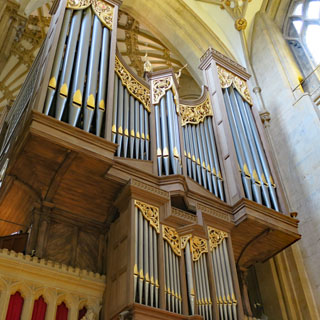
I stayed for Evensong, which was being done by a special guest choir from Houston, Texas. They did a fine job; and what an exciting thing for them to do. (Incidentally, after talking with several choir members after the service, I realized that they were probably the reason finding a room that evening was more difficult than I would have expected.)
Fudge; you want fudge? What flavour...
The pub that is the heart of the City Arms.
This was the best pub meal I think I had on the entire trip, but I never had any that were not very good.
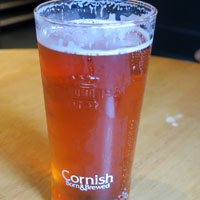
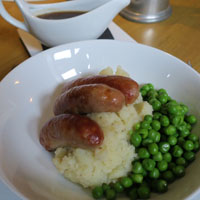
St. Mary's Church, Berkeley, Gloucestershire. Berkeley is on the banks of the Severn river.


Berkeley Castle. The castle dates to the 11th century and remains in the Berkeley family to this day.
It is a private castle, but much of it is open to tourists.

That sea-chest? It belonged to Sir Francis Drake. It's the chest he had on his around-the-world voyage. Amazing.


Edward 2nd, King of England (1307 - 1327) was killed (or at any rate died) in the castle. The often-repeated story of his murder is particularly ghastly and I won't repeat it here (you can look it up). On the left is the room where he was restrained and on the right is the dungeon that is directly below his room.

It looks like the dining room is still used on occasion.



While I was there, a film crew was at work converting some rooms to the appearance they might have had during the Tudor period. I was told that it was to be a Brad Pitt production, but they didn't think that Brad Pitt was going to be in it.

Doctor Edward Jenner (1749 - 1823) was from Berkeley and had his home here. It's just next to the castle grounds and is an easy walk. Jenner developed the first Smallpox vaccine and was instrumental in beginning the understanding of vaccines (smallpox was responsible for the death of 10% to 20% of the European population, year in, year out). Even the word "vaccine" is his. He freely gave vaccinations to the neighborhood in his "Temple of Vaccinia."
It is said that he saved more lives than any person in human history. In 1979 smallpox was declared eradicated.
The house of Edward Jenner and "Temple of Vaccinia."

Wooferton, Shropshire. My plan is to ride south through Wales, but I'll stop here for the night before the evening rains come through.

Laundry is done every evening. It's one of the first things I take care of after checking into a hotel. I carry a sink-stopper in my travel kit as about a third of the places I stay don't have one.

Beer from the Wye Valley in the evening and another excellent breakfast the next morning. The guest lounge is one of the best I've seen; it has plenty of room to spread out my maps.


 Wales
Wales
Cool riding weather, but really very nice. I like Wales.
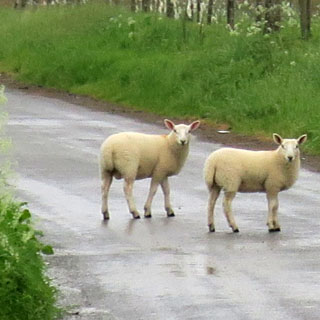
Llangurig, Powys. This is a typical Welsh town. A few commercial buildings, an old church, some houses and the smell of burning coal.

Rheidol Valley.
Aberaeron. So, how do I remember the names of the towns where I've been for this report? Here's one way.

The tide is out and it smells like the ocean.
Newport (Trefdraeth), Pembrokeshire. After three fails (very sorry, we're full), I found my room at the Golden Lion.

St Mary's church dates from the Norman period.


The old FitzMartin (1155 - 1209) castle. Some of the walls remain, and a house has been built up against the old corner of the castle.



The River Nevern (Afon Nyfer).

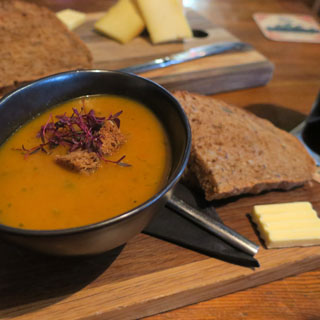
St. David's Cathedral (Eglwys Gadeiriol Tyddewi).
Saint David was a bishop in Wales during the 6th century. By all accounts he really was a good and peaceful man. He's the patron saint of Wales (and of vegetarians, which he was).
Fishguard is where I'll catch the ferry to Ireland.




 Ireland
Ireland
Wexford.
I'm staying upstairs at the yellow-painted pub, below. I normally take the first photo of my room before unpacking, but not this time, it seems. I'm not packing very much and that means that every evening the bag is emptied.

The main street through town is now pedestrian-only (except when a car drives down the street, anyway).
Church of Ireland and Catholic church. You'll often find both.

Fish-and-chips shops are about as utilitarian as you'll find. Nobody stays inside to eat; place your order, take your paper-wrapped load of fish (seems far more than I can possibly eat), and find a place to eat outside.

You can expect the more important roads to be (mostly) wide enough. The smaller roads all look the same on a map, but in actuality can be nothing but a single lane with no pull-outs.
Wicklow Gap.
Glenmacnass Valley.
Glenmacnass Waterfall. A remarkable waterfall, that I gather can sometimes have a great deal of water flowing down the rocks face.
Sally Gap and the old military road. I saw more bicycles than cars along this road. It looks every bit like Scotland. Walking to take this photograph, my feet would sink a good four inches into the moist ground. It's hard to tell the difference between plant and dirt--it's all just gushy.
Bog-of-Allen Nature Centre. I saw this place on the map and through it sounded really interesting--a scientific center devoted to the study and preservation of bogs. Unfortunately, it was closed.
Ireland doesn't have nearly the number of abandoned structures that you'll see in the English countryside, but they are here. Just, something out in the field, and part of the landscape.
Ballyboggan Priory
Castlepollard, Westmeath.




The downstairs bar at the Hotel.
Guinness and Irish stew, a good combination.
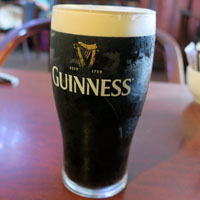

Funny thing when I stepped off the road to take a picture of this working peat bog. I stepped onto the brambles and sank a good foot into the wet ground. I took another step and sank further down. Then I toppled over into the thorny brambles without any way to maintain my balance. So, there I was, face down in a bramble patch. Of course, my riding suit and helmet protected me, but my gloves were off so I ended up with one bloody hand (while the other held the camera out of harms way). The risks I take to get the best photograph...
 United
Kingdom (North Ireland)
United
Kingdom (North Ireland)
Giant's Causeway on the north coast. My goodness, but this is a popular place.
Inside the visitor center.


Walking with the other pilgrims down to the beach. For those that don't want to walk, you can wait for the shuttle bus and pay your money for the short ride.
It's a curious thing.


Lough Foyle.
Londonderry for the night. I expected to enter the old walled city and find a hotel, but I rode past this hotel, and figured it would do just fine.

The view from my room. The pedestrian bridge on the left is the "Peace Bridge."
Londonderry still has its original walls that completely circle the city.






Londonderry vs. Derry. The name makes a difference and the name still divides (even highway signs were marked out). I asked the desk clerk how they handle the issue, and he said they just tell people to call the place "Legendary." Good answer.
There are several memorials to the events during "the troubles." This has been a violent and tragic place. Today, you can walk anywhere without needing to give it a thought--such is progress made.

These very large murals in Derry (that are two or three stories high) are not so much of reconciliation as they are of "never forget." The IRA may be gone and the borders also virtually none-existent, but people are still here and they remember.



 Ireland
Ireland
Marblehill (Cnoc an Mharmair). It's a nice beach that's a good ways from the highway. There were several walkers.
It would seem to be an out-of-the-way place for a coffee shack that offers dozens of varieties of coffee, but they seem to be doing a good business. I think most people here arrived by bicycle.

Riding across County Donegal. There are fences here, but you cannot ever dismiss the possibility that on the next bend in the road, you'll be blocked by sheep (a sheep does not care one bit to move out of your way).
This land is the softest. I suppose sheep and horses know enough not to get stuck.
Mount Errigal (the tallest peak in County Donegal). There's a path that follows the spine on the right to the top. I talked with a bunch of guys who were getting ready to make the trek; the view from the top is amazing. I'll take their word for it, I'll take a photograph from down here.
Dunlewy Lough.

River Gweebarra.
River Owenea.

I'm riding this remote road looking for a waterfall that is indistinctly marked on my map. I stopped next to the tractor (you can just see my bike) to ask if I was anywhere near such a thing.
"Yes. It's just down the road; you cannot miss it." What do you call this place and this inlet? "I call it beautiful."
Assaranca Waterfall. He was right; you cannot miss it.
Where the water flows into "beautiful."
Up and over the mountains on a road that wouldn't seem to be wide enough for two cars--I stayed in the right-hand track. There was no traffic (except for a couple of sheep).
Kilcar.
Killybegs, County Donegal. This looks a nice place to stop for the evening.



The fishing fleet is as clean and neat as any I've ever seen. Every boat is painted, every length of rope is coiled; nothing is out of place.


Soup and fish. I've developed a fondness for Irish brown bread with Irish butter.
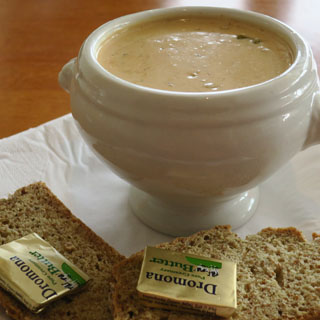
Slieve League (Sliabh Liag).
I'm here for the view of the high cliffs. But, there's nothing to see except fog and low clouds. No matter; I'll wait. I've got no place to be.
Docile sheep. They don't care how close you get.

The clouds have been swept away (for now).
Drumcliff (Droim Chliabh), County Sligo.
The round tower of Drumcliff (built between 900 an 1200). I've seen a few round towers, but haven't yet photographed one. This one was very handy, right next to the road. These towers were originally built as bell-towers and you'll find them near churches (or where churches once were).
William Yeats is buried here at St Columba's Church.


Under bare Ben Bulben's head
In Drumcliff churchyard Yeats is laid,
An ancestor was rector there
Long years ago; a church stands near,
By the road an ancient Cross.
No marble, no conventional phrase,
On limestone quarried near the spot
By his command these words are cut:
Cast a cold eye
On life, on death.
Horseman, pass by!
--excerpt "Under Ben Bulben" W.B. Yeats
Roslee Castle (1207).
Ballina, County Mayo.
I was pretty lucky on this trip. I crossed over the river, and saw the hotel. Done; I've got a room for the night.
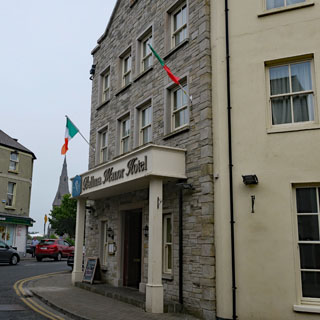
Salmon fishing on the River Moy. Salmon preservation is important in Ireland.
Fish and Gin. Yes; it seems that Gin has taken over most everything else. I asked if Irish Whiskey was very popular, and was told (more than once) that Gin was far more popular with young people. A typical bar that I was in would have seemingly dozens of gin varieties. That, and light American beers in a can. Yes; really.
I'll finish the evening in my hotel lounge with an Irish Coffee. Getting the cream just right seems to be the hardest thing.
Ballintubber Abbey (founded 1216).

The abbey is still used as a church and seems to have a very active priest in restoring it and preserving the old Celtic parts.
During the religious wars, the church was largely destroyed, but it never stopped being used.



Shrule, County Mayo.
Food? You've brought us food? No; sorry, young cattle.
Quite right. Tell people to stop building cairns or otherwise moving the rocks around. It harms historical sites and it's just silly.

Foynes Flying Boat & Maritime Museum. Charles Lindbergh identified this location as the eastern end of the Pan Am flying boat service across the Atlantic. As a commercial venture the thing didn't last very long, but the development was remarkable and the airplanes helped the further development of airliners to come.



The museum had several videos of the flying boats in operation.



The museum has built a full scale mockup that was really well done. A trip in a Boeing Clipper would have been as nice as any passenger plane of those days, but it also would have been incredibly loud and probably rough, as well. The Clipper was not pressurized, so the flight would have been at just around 10,000 feet all the way across the ocean.







Listowel, County Kerry.
If you want to stay in Listowel, the Listowel Arms Hotel should be your only choice. It's been here since the early 1800s (at least).
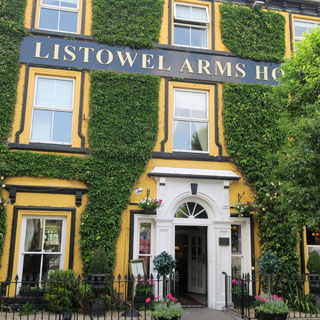



Listowel Castle (1400's). This was the last fortress to hold out against the army of Elizabeth I during the Desmond rebellion. After the surrender, the soldiers defending the castle were executed and all lands confiscated. Difficult times, and in the end, honor didn't count for much.
St. Mary's Church (1829).
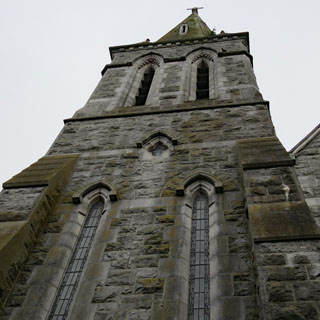
The Listowel Racecourse (opened in 1858) is home to the Guinness Kerry National.
River Feale (Abhainn na Féile).
There are several guest lounges to choose from. Fish and chips might seem to be ordinary, but I was eating at the bar so it seemed appropriate--and, it was good.

Kippers for breakfast.

My last day's ride across Ireland.
What looks like water is a strawberry patch under cover. Strawberries are a major crop in this area.
I'm back in Rosslare in time to roll onto the ferry without much waiting.

My room is unexpectedly large, and they've supplied me with fruit and both red and white wine (as well as beer and soft drinks in the refrigerator). I won't arrive in France until around 10:30 the next morning, so there's no need to be hurried.



 France
France
Teillay, Brittany
Rougé, Loire
Saint-Laurent-en-Gâtines. The 15th century building once housed the Abbots of Marmoutier before its conversion to a church.
Blois was once the royal city of France. It was heavily damaged during World War 2.

This bridge (over La Loire) was a frequent target for bombing.
Eglise Saint-Nicolas (from 1138).


Sometimes a building just needs a little support.

Mur-De-Sologne.
French roads and tractors. You just get used to it. They're not ever going to pull over to let you by. Relax.
That petrol station: it's fully self-serve, there isn't any person on the site and if you don't have a real chip-and-PIN card you'll not be getting fuel. On this trip, I had a Travelex Money Card, which is a cash card that you preload with Euros (or other currencies). It's a true chip-and-PIN card and also supports NFC transactions. So, while my normal American credit or debit cards cannot be used, this Travelex card is accepted at the pump. That's a good thing considering the number of times in France I've been at pains to find any station that I could use.

Canal latéral à la Loire (built 1827). The couple has been successful at catching what looked like small catfish.
Riding through Burgundy. What a nice day.
Autun. I was heading someplace else, but when I reached Autun, it looked like the better choice.
My room is at the top. I learned to keep my head down.

Cathedrale Saint-Lazare.

The interior is undergoing full restoration, but this end has been completed and its beautiful.
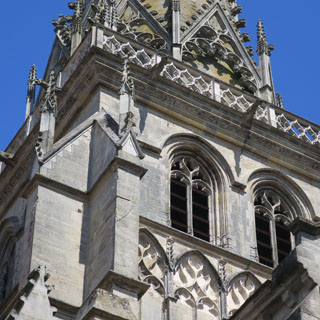
At one time the stone work was considered so embarrassing that it was fully covered with plaster (unfortunately, in other places the figures were chipped off). Of course, the plaster has all been removed and this amazing work can now be seen again.



The Restoration Museum next to the cathedral is once of the best I've been to. They make use of a couple of technical devices to show the history of Autun and the cathedral, but the technology never gets in the way. Using 3d goggles is really an effective way to see the details of the stone masonry.


Autun was founded by Romans and has been large and important and then small and forgotten through the centuries. Archeology has exposed much of its past. It's a remarkable place that I knew little about.
Le Musée Rolin has got to be the most rambling museum I've been to. You need to poke into every door and take every staircase.
Local Roman tile that has been discovered and uncovered. The workmanship is amazing. Also amazing is that it's still here.




Their art displays are old-fashioned (and I like it that way). Hang all the pictures until you run out of wall space. Don't worry too much about consistent themes.
The old Roman theater remains. Originally, the elevated seats extended up from where the trees are today. The height of the trees is close to the height of the original seating.
Is bocce ball the least strenuous sport? Most of the time is spent standing about talking. What's that strong smell? It's the husks of discarded wine grapes used as a ground cover in the flowerbeds.
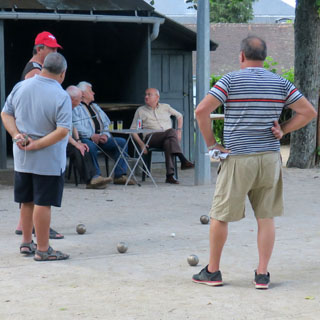


Mercurey, Saône-et-Loire.
Riding into the Jura Mountains that border Switzerland and France.
Vallée de l’Ain.
Monnet-la-Ville.
River L'Ain, Champagnole...
...and, the mill downstream.
Rochejean.

 Switzerland
Switzerland
Having to buy a one-year Swiss vignette for $40 when you're only going to be riding the Swiss highways for a couple of hours seems excessive, but that's the way it is.


Montreux, on Lake Geneva.
Looking south across Lake Geneva towards Italy and France.
Visp and the view out my room.

A free library and a cat that doesn't seem to care that a car might come along at any moment.

Riding over Simplon Pass into Italy. I had several options to get over the Alps; I've been on all of them. But, I hadn't been over Simplon for several years, so that made the decision. The road has been improved considerably since I was last on it. New viaducts and bridges have eliminated several steep, sharp and narrow turns.
The pass is in Switzerland as are both approaches.
 Italy
Italy
Lago Maggiore. There is a ferry, which would have cut off several miles, but I'm happy riding the shoreline.
Castelli di Cannero was built 1519 for protection from Switzerland.
 Switzerland
Switzerland
The border between Switzerland and Italy is far from straight, so the roads will run in and out of both countries. In any case, the official language in this part of Switzerland is Italian.
Lago di Lugano.
 Italy
Italy
Menaggio on Lago di Como
The three towns in the center of Lake Come (Varenna, Menaggio and Bellagio) are connected by auto-ferries, which are frequent enough that you'll not need to wait too long.

Varenna is perhaps the prettiest town on the lake, I think.
Mandello del Lario. The round-a-bout at the entrance to the town has a new metal sculpture in the middle: Giulio Carcano's Moto Guzzi V8 Grand Prix racer.

And, I return the Mandello and Mamma Ciccia's B&B.

not many years ago, Chiesa di San Lorenzo (next door to the B&B) was being restored when a fire broke out. All signs of that are now gone; the place is gorgeous.


Wine with Ed, Peter and Alis (sorry about the photograph). If you were to play degrees-of-separation" with these three against the entire world's population of Moto Guzzi owners, you'd probably never go higher than 2.

Milano Duomo.

An exhibit of photographs by Josef Sudek and the Prague Spring of 1968.


The Gallerie d'Italia, Milano. Somehow, I've not ever been to this impressive and large art museum.



















and then...

...homeward.





